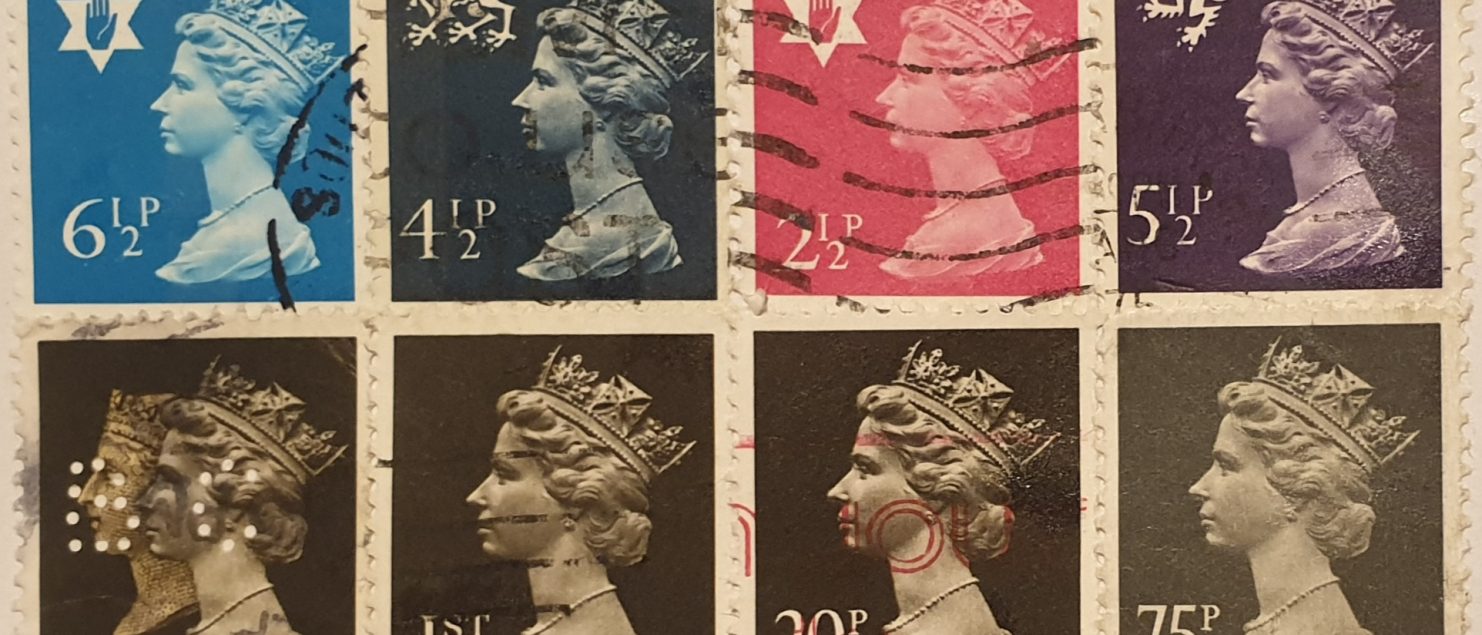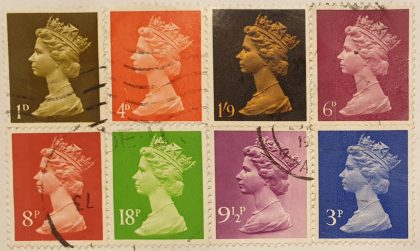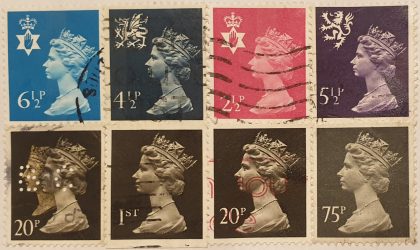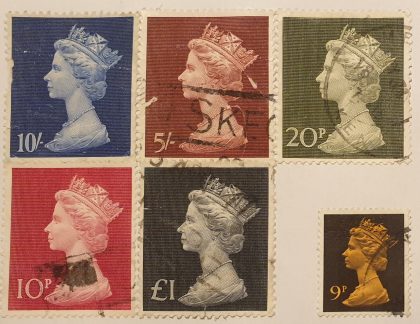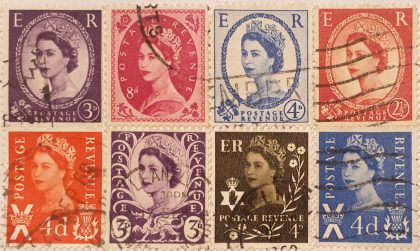Some sort of stamp story
Firstly, let’s get one thing clear; I am not a stamp collector, so I am no expert. This is an attempt to explain something about the stamps that I use in my work for those who may be interested. All that I know I have picked up from stamp dealers from whom I have bought stamps. For me, stamps are essentially a unit of colour which I use to make art. The value or rarity is of little consequence to me… except of course when I want to use a particular stamp that is rare and therefore takes time to source and is probably more expensive. Then I do care.
To date I have mainly made my art from used UK “definitive” stamps. These are the classic image of The Queen in profile. Stamp collectors call these “Machins” because the image is a photo of a bust made by Arnold Machin. Machins first came into circulation in 1967, so there are pre-decimal Machins (1967-1971) and decimal Machins (1971-present). Many denominations were available at any time, each in a different colour. Over time, colours are re-used for other denominations. So there are, for example, several different black stamps, and stamps of the same value can come in a number of different colours.
In the late 1960 and early 1970s, there were also some large Machins, that are quite simply bigger stamps. These were higher value stamps used for parcels. Stamp collectors differentiate between low value and high value stamps; low value are those with values are up to first class, whilst high value are those that are above first class. In general, used high value stamps are rarer and therefore more expensive. Pre-1967 definitives feature a photo taken by Dorothy Wilding, are known as “Wildings” and can feature most of the same variations as Machins. To date I have only made one work using Wildings. Stamps from 1901-1952 are usually known as “Kings”, because there were four different kings covering this period. The earliest UK stamps feature Queen Victoria, but these are much more valuable and therefore uneconomic for me in my art practice.
Stamps are produced using a manufacturing process with some variation by many different printers, so the colour inevitably varies to some degree. Additionally, every stamp is postmarked and has a journey through the postal service which can cause wear and tear. There are different types of postmark, for example the postage location, advertising or public information messages.
All of these factors make each individual stamp unique.

